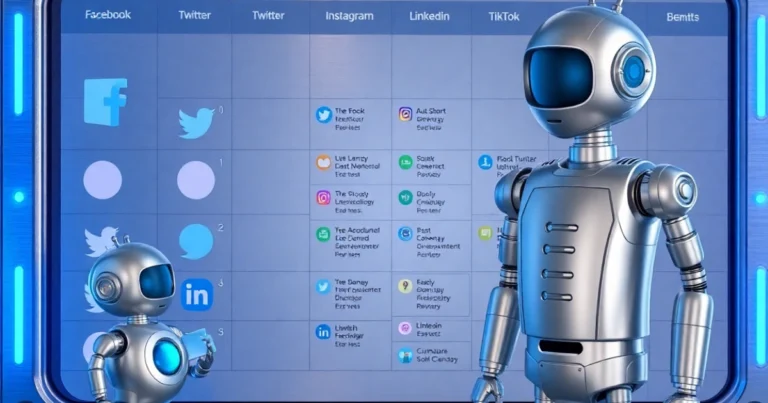Hero Brand Storytelling: Build a Memorable Narrative

Contents
Hero brand storytelling is a powerful strategy that transforms brands into relatable, inspiring figures that captivate audiences and drive loyalty. By crafting narratives that position your brand as the hero of your customers’ journeys, you can forge emotional connections, stand out in a crowded market, and ultimately boost conversions. In this article, we’ll explore how to create a hero brand story that resonates deeply, engages effectively, and converts consistently. From understanding the core elements of storytelling to implementing practical strategies, we’ll guide you through the process with actionable insights to elevate your brand’s narrative.
What Is Hero Brand Storytelling?
Hero brand storytelling draws inspiration from the classic “hero’s journey” framework, a narrative structure popularized by Joseph Campbell. In this context, your brand or customer takes on the role of the hero, facing challenges, overcoming obstacles, and achieving transformation with the help of your product or service. Unlike traditional marketing, which focuses on features and benefits, hero brand storytelling emphasizes emotional resonance and relatability.
For instance, brands like Nike and Apple don’t just sell products; they tell stories of empowerment, innovation, and triumph. Nike’s campaigns often portray athletes as heroes who overcome adversity, while Apple positions its users as creative visionaries. By adopting this approach, your brand can inspire trust and loyalty, ensuring your audience sees you as a guide in their journey.
Why Hero Brand Storytelling Matters
In today’s competitive landscape, consumers are bombarded with advertisements and content. Hero brand storytelling cuts through the noise by creating a memorable narrative that aligns with your audience’s values and aspirations. Here are a few reasons why it’s essential:
- Builds Emotional Connections: Stories evoke emotions, making your brand more relatable and trustworthy.
- Differentiates Your Brand: A unique narrative sets you apart from competitors with similar offerings.
- Drives Engagement: Compelling stories encourage shares, comments, and interactions across platforms.
- Boosts Conversions: Emotional connections lead to stronger customer loyalty and higher conversion rates.
By leveraging hero brand storytelling, you position your brand as a trusted ally, guiding customers toward their goals.
The Core Elements of Hero Brand Storytelling
To craft a compelling hero brand story, you must understand its key components. These elements ensure your narrative is engaging, relatable, and aligned with your brand’s mission. Let’s break them down:

1. The Hero (Your Customer or Brand)
Every story needs a hero, and in hero brand storytelling, this is often your customer. They’re the protagonist facing challenges, seeking solutions, and striving for success. Alternatively, your brand can be the hero, stepping in to solve problems and make a difference. For example, Patagonia positions itself as a hero fighting for environmental sustainability, resonating with eco-conscious consumers.
Tip: Identify your audience’s pain points and aspirations to make them the hero. Use customer research to understand their needs and desires.
2. The Challenge
The hero faces a problem or obstacle that creates tension in the story. This could be a practical issue (e.g., lack of time, limited resources) or an emotional one (e.g., fear of failure, lack of confidence). Your brand’s role is to acknowledge this challenge authentically.
Example: A fitness brand might highlight the struggle of maintaining a workout routine in a busy schedule, positioning its app as the solution.
3. The Guide (Your Brand)
In the hero’s journey, the guide provides wisdom, tools, or support to help the hero succeed. Your brand plays this role by offering products, services, or insights that empower customers. For instance, Dove’s “Real Beauty” campaign acts as a guide, encouraging women to embrace their natural beauty.
Tip: Position your brand as a supportive partner, not a self-centered hero. Focus on how you help customers achieve their goals.
4. The Transformation
The heart of hero brand storytelling lies in the transformation—the moment the hero overcomes their challenge and achieves success. This could be a tangible outcome (e.g., weight loss, career advancement) or an emotional shift (e.g., newfound confidence). Your brand should clearly demonstrate how it facilitates this transformation.
Example: A financial planning service might show how its tools help a customer go from financial stress to security.
5. The Call to Action
Every story needs a resolution that inspires action. In hero brand storytelling, this is your call to action (CTA), prompting customers to engage with your brand. Whether it’s signing up for a newsletter, purchasing a product, or sharing their story, the CTA should feel like a natural extension of the narrative.
Tip: Use action-oriented language like “Start Your Journey” or “Join the Movement” to inspire immediate engagement.
How to Craft a Hero Brand Story
Now that you understand the core elements, let’s dive into the step-by-step process of creating a hero brand story that captivates and converts. Follow these strategies to ensure maximum impact.

Step 1: Know Your Audience
Before crafting your story, you must understand your audience’s needs, desires, and challenges. Conduct thorough research using surveys, interviews, or social media analytics to gather insights. Ask questions like:
- What are their biggest pain points?
- What motivates them to take action?
- What emotions drive their decisions?
For example, if you’re a skincare brand targeting millennials, you might discover they value sustainability and authenticity. Your hero brand storytelling could focus on eco-friendly products that empower them to feel confident in their skin.
Pro Tip: Create detailed buyer personas to guide your storytelling. Include demographics, behaviors, and emotional triggers.
Step 2: Define Your Brand’s Role
Next, clarify how your brand fits into the hero’s journey. Are you a guide offering tools and expertise, or a hero solving a specific problem? Your role should align with your brand’s mission and values. For instance, a tech company might position itself as a guide helping small businesses streamline operations through innovative software.
Example: Slack’s storytelling highlights how its platform transforms chaotic workplaces into organized, productive environments.
Step 3: Craft a Compelling Narrative
With your audience and role defined, it’s time to write the story. Use the hero’s journey framework to structure your narrative:
- Introduction: Introduce the hero (your customer) and their challenge.
- Conflict: Highlight the obstacles they face and the stakes involved.
- Resolution: Show how your brand helps the hero overcome the challenge.
- Transformation: Emphasize the positive change or outcome.
- CTA: Encourage the audience to take the next step.
Example Story: Imagine a small business owner struggling to manage a growing team. They feel overwhelmed and disconnected. Your project management tool steps in as the guide, offering intuitive features to streamline communication. The business owner regains control, boosts productivity, and achieves success. The CTA invites them to try your tool for free.
Step 4: Incorporate Emotional Appeal
Emotions drive decision-making, so infuse your story with feelings that resonate with your audience. Use vivid language, relatable scenarios, and authentic testimonials to create an emotional connection. For instance, a pet food brand might share a story of a dog owner finding the perfect nutrition plan, evoking feelings of love and care.
Tip: Use storytelling techniques like metaphors, sensory details, and dialogue to make your narrative more engaging.
Step 5: Optimize for SEO
To ensure your hero brand storytelling reaches a wider audience, optimize your content for search engines. Here’s how:
- Keyword Placement: Include the main keyword, “hero brand storytelling,” in the title, headings, meta description, and throughout the content at a 1% density (approximately 30-35 times for 3000-3500 words).
- Related Keywords: Use secondary keywords like “brand narrative,” “storytelling for brands,” and “customer journey” to enhance relevance.
- Internal and External Links: Link to relevant blog posts on your website and authoritative external sources to boost credibility.
- Headings and Subheadings: Use H2 and H3 tags to structure your content, making it easy for readers and search engines to navigate.
- Alt Text for Images: If including visuals, use descriptive alt text with relevant keywords.
Example: Instead of “Click here,” use a descriptive CTA like “Discover Hero Brand Storytelling Strategies.”
Step 6: Distribute Across Channels
A great story is only effective if it reaches your audience. Share your hero brand storytelling content across multiple platforms:
- Blog: Publish the full article on your website, optimized for SEO.
- Social Media: Share snippets, quotes, or visuals from the story on platforms like Instagram, LinkedIn, and Twitter.
- Email Newsletters: Send a teaser of the story with a link to the full article.
- Video or Podcast: Repurpose the story into a video or podcast episode for broader reach.
Tip: Tailor your content to each platform’s tone and format for maximum engagement.
Real-World Examples of Hero Brand Storytelling
To inspire your efforts, let’s look at brands that excel at hero brand storytelling:

1. Nike: Empowering the Everyday Athlete
Nike’s campaigns often position customers as heroes striving for greatness. Their “Just Do It” slogan and stories of athletes overcoming adversity inspire audiences to push their limits. By focusing on universal themes like perseverance, Nike creates emotional connections that drive loyalty.
Takeaway: Use universal themes to make your story relatable to a broad audience.
2. Airbnb: Belonging Anywhere
Airbnb’s “Belong Anywhere” campaign tells stories of travelers finding unique, authentic experiences through their platform. By highlighting real hosts and guests, Airbnb positions itself as a guide that fosters connection and belonging.
Takeaway: Use real customer stories to add authenticity and relatability.
3. TOMS: One for One
TOMS’ storytelling revolves around its “One for One” model, where every purchase helps someone in need. By framing customers as heroes who make a difference, TOMS creates a sense of purpose that drives sales and loyalty.
Takeaway: Align your story with a cause that resonates with your audience’s values.
Common Mistakes to Avoid in Hero Brand Storytelling
While hero brand storytelling is powerful, it’s easy to make mistakes that dilute its impact. Here are some pitfalls to avoid:

- Focusing Too Much on Your Brand: Don’t make your brand the sole hero. Highlight the customer’s journey instead.
- Lack of Authenticity: Avoid exaggerated or generic stories. Use real data, testimonials, or case studies to build trust.
- Ignoring SEO: Failing to optimize your content limits its reach. Ensure proper keyword usage and technical SEO.
- Weak CTA: A vague or uninspiring CTA can reduce conversions. Make it clear and compelling.
By avoiding these mistakes, you ensure your story resonates and performs effectively.
Measuring the Success of Your Hero Brand Storytelling
To gauge the impact of your hero brand storytelling, track key performance indicators (KPIs):

- Website Traffic: Monitor page views, unique visitors, and time spent on your storytelling content.
- Engagement Metrics: Measure likes, shares, comments, and click-through rates on social media and email campaigns.
- Conversion Rates: Track how many visitors take desired actions, such as signing up or making a purchase.
- Brand Sentiment: Use social listening tools to analyze how audiences perceive your brand after the campaign.
Tip: Use tools like Google Analytics, SEMrush, or Hootsuite to track performance and refine your strategy.
Conclusion
Hero brand storytelling is a game-changer for businesses looking to connect with audiences on a deeper level. By positioning your customer or brand as the hero, addressing their challenges, and guiding them to transformation, you create narratives that inspire, engage, and convert. Follow the steps outlined—know your audience, define your role, craft a compelling narrative, and optimize for SEO—to build a story that stands out. With authenticity, emotional appeal, and strategic distribution, your hero brand storytelling can drive loyalty and growth for years to come.
Start crafting your hero brand story today and watch your audience connect with your brand like never before. Ready to begin? Share your story with us and inspire your customers to embark on their own heroic journey!






